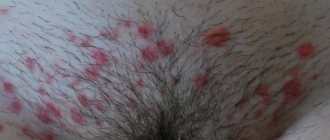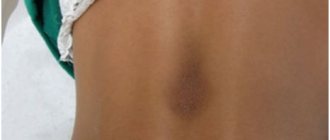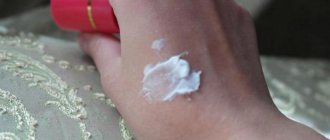Human skin
- a kind of indicator that reflects the state of all its organs and systems, protects against the penetration of infections, mechanical and chemical damage.
Skin diseases indicate
any disruption in the functioning of internal organs, an unhealthy lifestyle and bad habits, poor nutrition and failure to comply with personal hygiene rules by the patient. The variety of skin diseases is amazing. Many of them are difficult to treat and have a chronic, relapsing nature. Such ailments include eczema, psoriasis, neurodermatitis and dermatoses.
What symptoms should you see a doctor urgently?
People often resort to self-diagnosis of diseases when identifying changes in the skin. The Internet is replete with articles detailing the symptoms and treatment of diseases. But there are many dangerous symptoms, if detected, you should immediately contact a specialist.
1. Rash
. The rash is a symptom of many diseases, both skin and related to other organs. Rashes can be a symptom of an allergic reaction, stress, gastrointestinal pathology, and even cancer. If the rash is brightly colored and does not go away for more than 48 hours, do not delay visiting a specialist.
2. Warts
. The appearance of warts on the skin is caused by various strains of the human papillomavirus. The virus is transmitted from person to person, so if you find papillomas or condylomas on any part of the body, you should make an appointment with a dermatologist or dermatovenerologist.
3. Peeling
. A seemingly harmless symptom can serve as a signal of a dangerous disease. If peeling skin is accompanied by prolonged itching, redness and severe dryness, it is better to consult a doctor for an accurate diagnosis and treatment. If peeling has become the skin’s response to exposure to frost, sun or wind, then we recommend that you protect your skin more carefully and use special creams.
4. Change in skin color
. A change in skin color after tanning or peeling is quite understandable, but if you find suddenly appearing spots on your body or face, this is a reason to make an appointment with a doctor. Red spots can signal an acute allergic reaction or gastrointestinal diseases, yellowing of the skin is one of the symptoms of hepatitis B and C, dark spots can indicate necrotic processes.
The most common skin diseases
There are many skin diseases. All of them spoil the appearance and cause discomfort, and some are fraught with dangerous consequences, so it is important to diagnose and treat them in a timely manner.
The most common skin diseases include:
- acne;
- dermatitis;
- herpes;
- lichen;
- papilloma;
- scabies;
- bedsores.
Acne is a disease that teenagers and young adults often experience. It is characterized by the appearance of acne and purulent follicles localized in the face, chest and shoulders. Acne greatly spoils the appearance and rarely goes away without a trace: scars, irregularities and spots remain on the skin, which are then almost impossible to get rid of, so treatment of the disease must be started as early as possible.
Dermatitis is an inflammation of the skin accompanied by redness and itching. Can be localized almost anywhere. This skin disease can be caused by various reasons, from mechanical damage to a disruption in the functioning of internal organs. Depending on the reasons that provoked it, several types of dermatitis are distinguished: atopic, contact, seborrheic.
Herpes is characterized by the formation of blisters containing clear liquid on the surface of the skin. The affected area hurts and itches, and a few days after the blisters burst, a yellowish crust forms in their place. The lips, nose and genitals are most often affected. The disease is caused by the herpes virus, which infects most of the world's population and is activated by favorable factors: decreased immunity, metabolic disorders, alcohol abuse, etc.
Ringworm appears as colored or scaly patches on any part of the body, including the scalp under the hair, causing partial baldness. Ringworm can be caused by various pathogens, so for effective treatment it is necessary to accurately determine the cause. There are several types of lichen: ringworm, scaly, candidiasis and others.
Papilloma is manifested by the formation of small growths and warts on the skin. Since the formation of growths is caused by pathological proliferation of cells, in medicine it is customary to classify the disease as benign tumors. Papillomas can be localized almost anywhere. The greatest discomfort is caused by papillomas on the face, which greatly spoil the appearance. Due to their structure, papillomas are often injured, which can lead to further growth and even development into a malignant tumor.
Scabies, as the name suggests, is manifested by severe, unbearable itching. Next, redness and stripes appear on the skin, the so-called scabies. The disease occurs as a result of infection with scabies mite, which is not visible to the eye, but is easily transmitted from person to person, including through household objects.
Bedsores are formed as a result of necrosis of soft tissues due to disruption of their nutrition. Often appear in bedridden and partially immobile patients. They manifest themselves as redness and swelling of the skin, the formation of blisters, which subsequently turn into ulcers. Bedsores are dangerous because they grow quickly and can destroy soft tissue right down to the bones.
There are many other skin diseases: eczema, dermatomycosis, melanoma, carcinoma, keratosis. In the early stages, most of them can be successfully treated, so the importance of timely diagnosis cannot be underestimated.
TOP 5 skin diseases
Skin diseases are quite common and can appear at any age. They cause physical discomfort to a person, force them to hide the affected areas under thick clothing or use cosmetics to hide imperfections.
Fortunately, modern dermatology successfully fights skin diseases. And here are the 5 most common of them.
1. Acne.
Acne, or acne, is an inflammatory skin disease that occurs as a result of blockage of the sebaceous glands. More than 80% of the world's population is prone to acne, most of them are teenagers. The disease begins with the appearance of acne, blackheads and papules (inflammatory nodules). If you are the parent of a teenager with acne, bring him to see a doctor in order to treat the disease in time and prevent its complications, or come yourself if you suddenly encounter the disease as an adult.
2. Atopic dermatitis.
Another inflammatory skin disease is atopic dermatitis. The disease is especially common among children (10–15% in developed countries). The disease is accompanied by redness of the top layer of skin, dryness and severe itching. A complete cure of the patient is impossible, but to mitigate the course of the disease, moisturizing medicinal ointments and local immunomodulators are used. Ignoring the disease can lead to serious complications and the development of skin infections.
3. Psoriasis.
Another common disease (about 5% in developed countries) is psoriasis. This is a chronic inflammatory non-infectious disease, which is characterized by the appearance of bright pink or red plaques on different parts of the body and head. In addition, there is severe burning and itching, dry skin. If left untreated, the risk of stroke increases and internal organs such as the liver and kidneys are also affected.
4. Herpes simplex.
One of the most common viral skin diseases. Antibodies to this virus are found in 90% of people. The main symptom of herpes is blisters filled with liquid that appear in the mucous membranes, most often the lips or nose. Lack of treatment can provoke a decrease in immunity and, as a result, an increased risk of acquiring new diseases.
5. Viral warts.
A common viral skin disease caused by the papilloma virus entering human skin cells. The virus is often transmitted through everyday contact (shaking hands, using objects of the carrier) or sexually. Convex nodules called warts form at the site of virus penetration. The danger of the disease is that the virus has oncogenic strains that can lead to the development of cancer.
Fortunately, there are few such strains, but it is worth checking to eliminate risks. This is especially true for women, because HPV is the first and most important cause of cervical cancer.
Leather: features and functions
The skin is the largest human organ, with its own physiology and anatomy. The weight of an adult's skin accounts for up to 15-20% of the weight of his entire body. In every square centimeter of skin there are 6,000,000 cells, 5,000 sensory points, about 100 sweat glands and 15 sebaceous glands. On the soles of the feet the thickness of the skin reaches 5 mm, while the skin around the eyes is no thicker than 1 mm. Skin differs in color, moisture, oiliness and density not only among different people, but also among the same person at different periods of his life, as well as in different parts of his body. The skin performs several important functions. Firstly, it protects the body from mechanical influences, dirt, bacteria, harmful chemicals, ultraviolet radiation, etc. Secondly, waste products of the human body are removed through the skin. Thirdly, the skin is a sensory organ: numerous nerve endings give a person the ability to touch.
The skin consists of three layers: epidermis, dermis and subcutaneous fat.
How to treat skin diseases
Unfortunately, there is no one universal remedy for treating skin diseases. After diagnosis, the doctor prescribes treatment that is appropriate in your case. It can be:
- Healing ointments and balms (healing, anti-inflammatory, hormonal, antibacterial)
- Oral medications (antibiotics, hormonal agents, immunomodulators)
- Physiotherapy (laser, magnetic therapy)
- Cosmetic procedures (cleansing, peeling, moisturizing masks)
- Cosmeceuticals (lotions, tonics, creams, masks)
Should you prescribe treatment yourself? Everyone decides for themselves. But we still want to warn you. Of course, if you have gone a little overboard with tanning or have several inflammations on your face due to the approaching critical days, then you can do without a doctor. But when it comes to serious diseases - psoriasis, allergies, dermatitis - self-medication can lead to worsening symptoms.
Contact specialists who will help you choose effective treatment. In the “Health” network of clinics, appointments are conducted by dermatologists and dermatovenerologists. They will conduct an examination, prescribe the necessary tests and help cope with the disease.
We are waiting for you at any of our branches!
What pathologies does a dermatologist treat?
Dermatologists at the Central Clinical Hospital of the Russian Academy of Sciences successfully treat diseases caused by:
- viral infections (warts, condylomas, herpes, molluscum contagiosum, etc.);
- bacterial infections (impetigo, pyoderma, etc.);
- fungal infections (mycosis of smooth skin, candidiasis, onychomycosis, favus, pityriasis versicolor, etc.);
- skin damage by parasites (scabies, pediculosis).
They will help you get rid of any non-infectious pathologies associated with skin, nails and hair problems: psoriasis, eczema, acne, atopic dermatitis, lichen planus, rosacea. Benign formations (keratomas, papillomas, etc.) are removed.
Cosmetic procedures help restore and improve the condition of the skin. To prevent negative changes, a dermatologist can recommend special diets and effective cosmetics to maintain the elasticity and healthy appearance of the skin.
Why should you contact the Miracle Doctor clinic?
Leading specialists
The clinic is attended by dermatologists of the highest category, candidates of medical sciences. Some doctors have more than 20 years of experience.
A complex approach
By contacting us, you can get advice from doctors of other specialties: endocrinologist, infectious disease specialist, etc.
Hi-tech
Doctors have modern diagnostic, cosmetology and surgical equipment at their disposal.
Help for adults and children
The clinic’s dermatologists accept patients of any age with infections, metabolic disorders, food allergies, etc.
Service for discerning patients
At the Miracle Doctor clinic you will find an individual approach, a friendly atmosphere and no queues.
Convenient work schedule
You can make an appointment with a dermatologist any day of the week. The clinic operates without breaks and weekends.
How is an appointment with a dermatologist?
During the consultation, the specialist listens to complaints, gives directions for tests and necessary diagnostic studies. The doctor selects diagnostic and treatment methods depending on the etiology of the disease. The patient should be prepared for questions about hereditary pathologies, bad habits, and medications taken. During the diagnosis, the affected areas of the body are examined. The dermatologist visually assesses the condition of the skin, the nature and prevalence of pathological manifestations. If necessary, non-surgical dermatoscopy is performed and skin scrapings are taken.
If the pathology is caused by problems with the functioning of internal organs, the doctor may refer the patient for consultation with an immunologist, endocrinologist, gastroenterologist, neurologist and other specialists.
Manifestations of diseases
Since the symptoms of skin diseases are usually visible to the naked eye, dermatology began to develop quite a long time ago. The external manifestations of skin diseases are especially well studied, described in detail and depicted in dermatological atlases and often having names associated with their discoverers. But, despite significant advances in terms of recognizing the disease, treatment for a very long time consisted of a fight against local symptoms, was selected empirically and usually had a temporary effect. Thus, various ointments, lotions and talkers made it possible to relieve itching, reduce flaking, relieve swelling, but did not act on the immediate cause, in particular, on the specific causative agent of a particular infection. We could only hope for spontaneous self-healing, which sometimes occurred as a result of the restoration of the body's defenses.
Modern dermatology allows you to study the problem from the inside. Microscopy, bacteriological and bacterioscopic, immunological methods provide a lot for diagnosis. All this allows, in most cases, to detect a specific cause and act directly on it. But the old proven methods also have not lost their relevance. For example, the method of scraping the top layer of psoriatic plaque still helps to recognize psoriasis.










